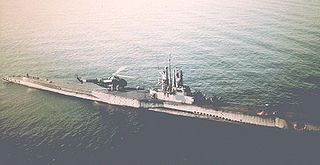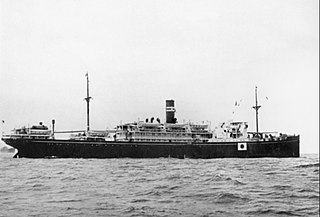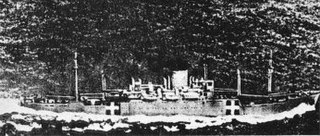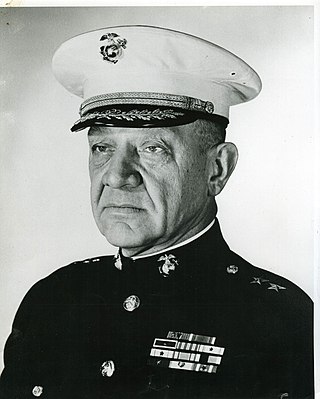
USS Sealion (SS/SSP/ASSP/APSS/LPSS-315), a Balao-class submarine, was the second ship of the United States Navy to be named for the sea lion, any of several large, eared seals native to the Pacific. She is sometimes referred to as Sealion II, because her first skipper, Lieutenant Commander Eli Thomas Reich, was a veteran of the first Sealion, serving on her when she was lost at the beginning of World War II. USS Sealion was the only US and Allied submarine responsible for the sinking of an enemy battleship during the Second World War.

Montevideo Maru was a Japanese auxiliary ship that was sunk by the USN in World War II, resulting in the drowning of 1,054 Australians who were being transported from Rabaul to Hainan, in what is considered the worst maritime disaster in Australia's history. Prior to the war the ship operated as a passenger and cargo vessel traveling mainly between Asia and South America.

USS Pintado (SS-387/AGSS-387), a Balao-class submarine, was the first ship of the United States Navy to be named for the pintado.

A hell ship is a ship with extremely inhumane living conditions or with a reputation for cruelty among the crew. It now generally refers to the ships used by the Imperial Japanese Navy and Imperial Japanese Army to transport Allied prisoners of war (POWs) and romushas out of the Philippines, the Dutch East Indies, Hong Kong and Singapore in World War II. These POWs were taken to the Japanese Islands, Formosa, Manchukuo, Korea, the Moluccas, Sumatra, Burma, or Siam to be used as forced labor.

Arisan Maru was a 6,886 GRT Type 2A freighter constructed in 1944 during World War II and was one of Imperial Japan's hell ships. The vessel, named for a mountain on Formosa, was initially used as a troop transport. The vessel was then turned over for use for the transportation of prisoners of war (POWs) from the Philippines to Manchuria, China or Japan. On October 24, 1944, the ship was torpedoed by an American submarine and sank. Of the 1,781 POWs aboard, all of them escaped the sinking ship but were not rescued by the Japanese. In the end, only nine of the prisoners survived the sinking.

Shin'yō Maru was a cargo steamship that was built in 1894, had a fifty-year career under successive British, Australian, Chinese and Greek owners, was captured by Japan in the Second World War, and sunk by a United States Navy submarine in 1944.

Ōryoku Maru was a Japanese passenger cargo ship which was commissioned by the Imperial Japanese Navy during World War II as a troop transport and prisoner of war (POW) transport ship. Japanese POW transport ships are often referred to as hell ships, due to their notoriously unpleasant conditions and the many deaths that occurred on board. In December 1944, the ship was bombed by American aircraft, killing 200 Allied POWs. Hundreds more died in the months that followed.

Allied submarines were used extensively during the Pacific War and were a key contributor to the defeat of the Empire of Japan.
Brazil Maru was a Japanese cargo ship requisitioned by the Imperial Japanese Navy during World War II as a troop transport and prisoner of war (POW) transport ship.

Atago Maru was a merchant ship built prior to World War II in Glasgow in 1924 by Lithgows & Sons for Nippon Yusen. One of the first diesel-engined cargo ships in service in Japan, Atago Maru was converted to an oil tanker in 1942. Returning to service in 1943, the ship saw extensive service traveling in convoys during World War II. On 28 November 1944, the vessel was bombed by a United States Army Air Forces bomber while at anchor off Borneo. The shipwreck is a popular diving site in Malaysia.

The Awa Maru (阿波丸) was a Japanese ocean liner owned by Nippon Yusen Kaisha. The ship was built in 1941–1943 by Mitsubishi Shipbuilding & Engineering Co. at Nagasaki, Japan. The vessel was designed for passenger service, but the onset of war by the time work was completed changed requirements, and she was requisitioned by the Japanese Navy. While sailing as a relief ship under Red Cross auspices in 1945, she was torpedoed by USS Queenfish (SS-393), resulting in the death of all but one of the 2,004 people aboard.
The Shin'yō Maru incident occurred in the Philippines on September 7, 1944, in the Pacific theater of World War II. In an attack on a Japanese convoy by the United States Navy submarine USS Paddle, 668 Allied prisoners of war were killed fighting their Japanese guards or killed when their ship, Shinyō Maru, was sunk. Only 82 Americans survived and were later rescued.

SS Rakuyo Maru (楽洋丸) was a passenger cargo ship built in 1921 by the Mitsubishi Shipbuilding & Engineering Company, Nagasaki for Nippon Yusen Kisen Kaisha.
Lima Maru was a 6,989-ton Japanese troop transport during World War II, which sank on 8 February 1944 with great loss of life.
Hawaii Maru was a 9,482-ton Japanese troop transport during World War II, which sank on 2 December 1944 with great loss of life.

The South China Sea raid was an operation conducted by the United States Third Fleet between 10 and 20 January 1945 during the Pacific War of World War II. The raid was undertaken to support the liberation of Luzon in the Philippines, and targeted Japanese warships, supply convoys and aircraft in the region.
Suzuya Maru was an auxiliary transport and hell ship of the Imperial Japanese Navy during World War II.

Reginald Heber Ridgely Jr. was a United States Marine Corps Lieutenant General. He was taken as a prisoner of war by the Japanese during World War II and was one of the few survivors of the infamous "hellships."
Patrol Boat No. 105 (第百五號) (ex-Arayat) was a former Philippine Commonwealth customs inspection and enforcement cutter that was sunk by the Japanese during the invasion of the Philippines and later raised and designated as a patrol boat in the Imperial Japanese Navy.











